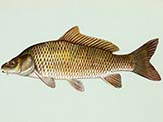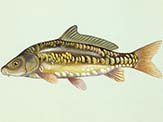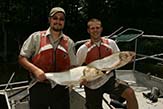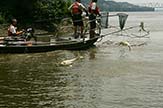Meats and Sausages
Carp
Fish RecipesCarp (Cyprinus carpio)
Protein-17.83%, Fat-5.60%, Water-76.31%
The common carp is native to Asia, and has been introduced to every part of the world. Carp is eaten in many parts of the world both when caught from the wild and raised in aquaculture. In countries such as Poland, Germany, Czech Republic, Slovakia and Hungary, carp is a traditional part of a Christmas Eve dinner. Carp is omnivorous; it can eat variety of foods, grass included. It can survive in water with little oxygen and that is why it has been farmed in ponds for over 2,000 years. Due to the facts that carp is great survivor and that a single carp can lay over a million eggs in a year, the fish is known to take over a particular body of water. For these reasons carp is often considered an invasive species. The annual production of common carp in China alone exceeds the weight of all other fish, such as trout and salmon, produced by aquaculture worldwide. Carp can become quite large fish, the world record is 101 pounds (46 kg).
Hot Smoked Carp
- Remove scales, cut off the head and gut the fish. Wash thoroughly. Cut into chunks between 1/2 and 1 pound.
- Brine for 8 hours in 80º brine. (Add 2.2 lbs of salt to 1 gallon of water. This makes 80 degrees brine). Rinse and drain.
- Apply a thin smoke at 100° F (38° C) for 60 minutes.
- Increase the temperature to 185° F (85° C) and smoke with medium smoke for 120 minutes.





















